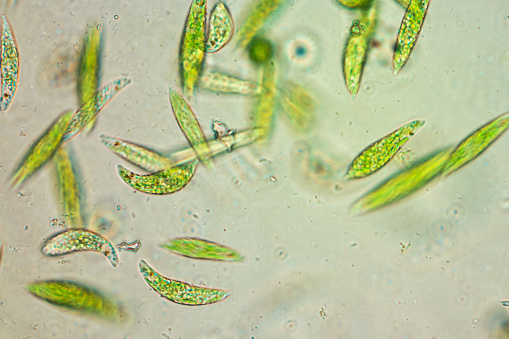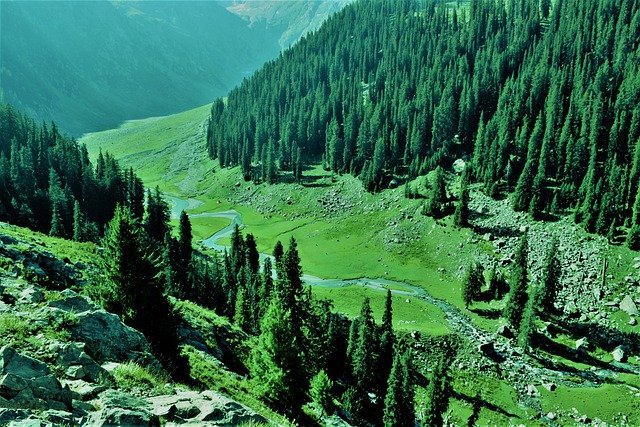Introduction:
Phytoplankton is a combination of two Greek words Phyto means plant and Plankton mean to make a drift. They are found in both salt water and fresh water. These are microscopic plant-like organisms and also make their food by capturing sunlight and converting it into energy. Some of them get more energy by consuming other organisms. Some of the phytoplankton are bacteria, cyanobacteria, dinoflagellates, diatoms, etc. Like the plant, they also possess chlorophyll and need some the nutrients such as phosphate, nitrate, and calcium etc. Their growth is dependent on the sunlight they obtain to make food, nutrient availability, and carbon dioxide. They take carbon dioxide in and release oxygen.
You may also like: Hydroponics – The Future of Agriculture?
Why Phytoplankton Are Beneficial To The Environment?
They are beneficial to the environment since they produce an estimated 80 percent of the world’s oxygen. Climate scientists are interested in learning more about phytoplankton because of their function in oxygen generation and carbon sequestration.
Bosse et al. have illustrated how intense winter storms form marine structures that alter nutrient delivery to phytoplankton populations as well as the organisms’ ability to produce and store carbon. Submesoscale coherent vortices, or SCV, are solitary, long-lasting kinds of eddies (swirling seawater) that normally move in the opposite direction of Earth’s rotation.
There is a common misperception that rainforests greatly contribute to the oxygen we breathe. In truth, the rainforest’s creatures and microscopic life absorb the majority of the oxygen. As a result, the rainforest’s or any forest’s net output of oxygen is near zero. The generally stated claim of rainforests generates 20% of the Earth’s oxygen supply is clearly incorrect. The Amazon rainforest has also been impacted by human-caused yearly fires, which diminish the amount of oxygen available to the ecology. However, phytoplankton in the water creates oxygen as well.
Also read: Deforestation – Causes, Effects, and Solutions
Scientists have concluded that photosynthesis by phytoplankton accounts for 50-80 percent of the oxygen in the Earth’s atmosphere. So, indeed, phytoplankton generates more oxygen than a rainforest! The explanation for this 30 percent discrepancy is that phytoplankton concentration fluctuates depending on the time of year. More phytoplankton blooms will occur in the spring and summer when there is more sunshine (shown as areas of paler blue and green in the satellite image). With less sunshine and nutrient availability in the winter, there will be fewer phytoplankton blooms.
Rather than simply raising dissolved oxygen in the water, phytoplankton oxygen has a direct influence on atmospheric oxygen. The atmosphere and submerged plants or phytoplankton in water are both sources of dissolved oxygen. When compared to freshwater, saltwater has much less dissolved oxygen. The oxygen generated as a consequence of photosynthesis by phytoplankton enters the ocean water but is later expelled as a gas into the atmosphere. In turn, oxygen from the atmosphere dissolves in the surface water, sustaining marine life in a continuous cycle.
You may also like to read: What Is Coral Gardening And Can It Help Save Coral Reefs?
Problem Caused Due to Phytoplankton
- When there are too many nutrients available, phytoplankton can overgrow and generate dangerous Harmful algal blooms (HABs). These blooms can contain highly poisonous substances that injure fish, shellfish, animals, birds, and even humans. The National Coastal Ocean Science Centers do considerable study on toxic algal blooms. Scientists employ a variety of tools to forecast where and when HABs will emerge, as well as how they will impact the places where they occur. Scientists utilize this data to advise coastal authorities on how to effectively respond in order to limit unwanted consequences.
- Phytoplankton dies and decomposes when they have depleted their nutrition. This causes a loss of oxygen in the surrounding areas. Oxygen levels fall, affecting aquatic life. These oxygen-depleted regions are known as ‘dead zones.’ Animals in the area perish or migrate to more appropriate habitats.
- Some phytoplankton can create poisons that are toxic to marine animals and even people if they bloom near the coast. Fortunately, only a few phytoplankton species produce Harmful Algal Blooms (HABs). Because of the high oxygen deprivation, these blooms induce respiratory difficulties in animals. HABs cost the seafood, restaurant, and tourism businesses $82 million each year.
Also Read: 12 Most Beautiful Places with Unique Ecosystems in World
Conclusion:
Briefly, phytoplankton is required for the survival of life as we know it. They are at the heart of everything, from climate cycles to food cycles. Highly evolved species such as humans rely on blindly floating single-celled organisms in huge oceans.
You may also like: What is Ocean Acidification? – Causes, Effects and Solutions
We hope you all liked this post! Please, comment below if you have any suggestions, comments, or feedback! We #envpk love hearing from our readers! Thanks!




